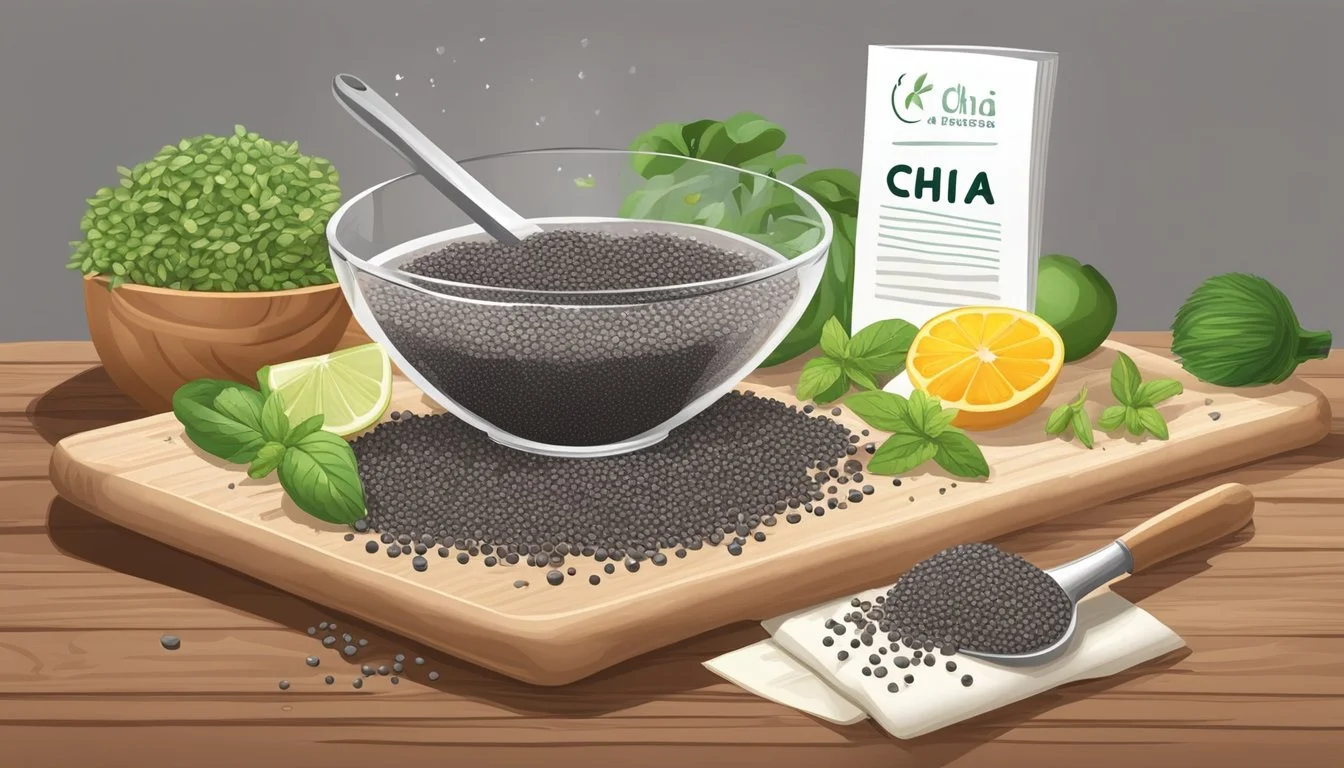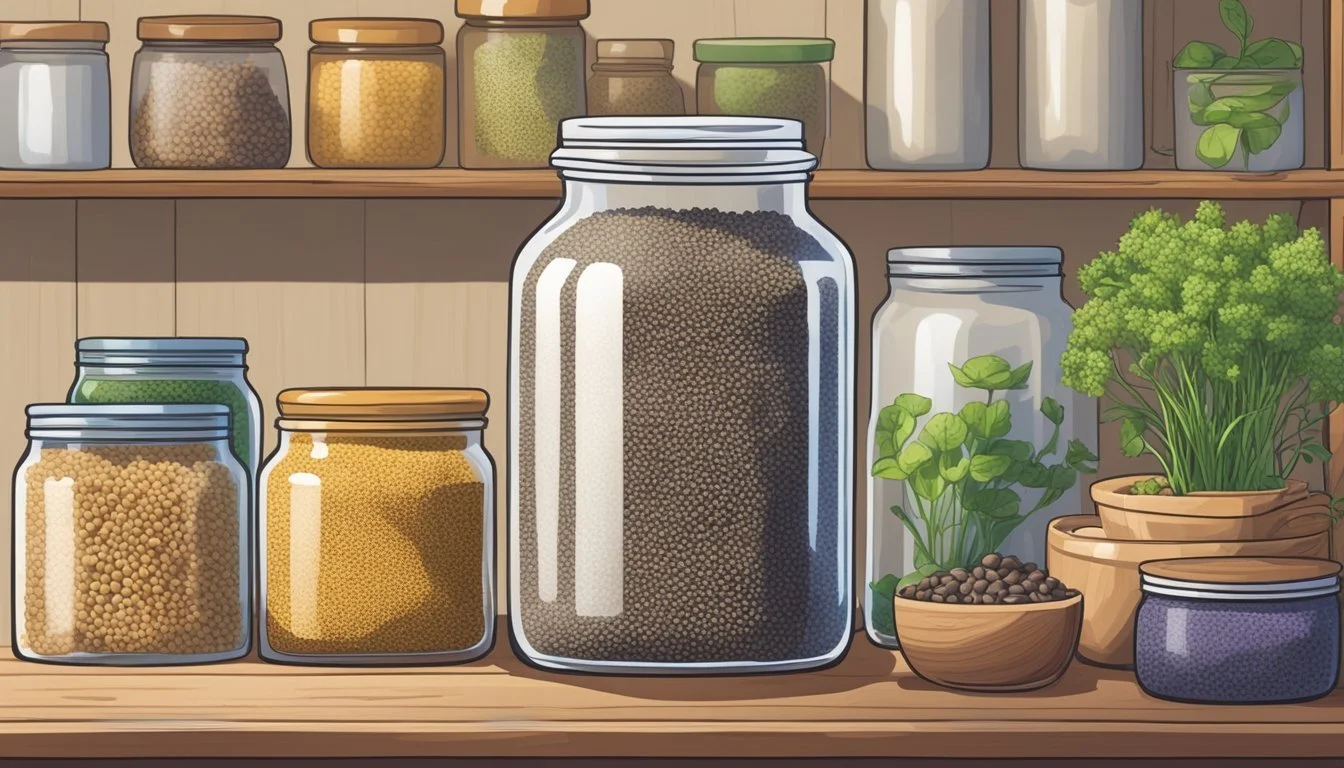How to Cook with Chia Seeds
Enhancing Texture and Nutrition in Your Meals
Chia seeds have earned their reputation as a superfood due to their impressive nutritional profile and versatility in cooking. Packed with omega-3 fatty acids, dietary fiber, and essential nutrients, these tiny seeds can enhance meals not just with their health benefits, but with added texture as well. Their ability to absorb liquid and form a gel-like consistency when soaked makes them particularly valuable for creating a variety of textures in recipes, from thick puddings to crunchy toppings.
Incorporating chia seeds into one's diet can be effortlessly rewarding; whether they're sprinkled whole over a salad for a satisfying crunch, or ground into chia flour for use in gluten-free baking, the seeds adapt well to different cooking methods. When hydrated, chia seeds transform and can be used to thicken sauces or as a binder in place of eggs in baking, providing a subtle nuttiness alongside their functional qualities. This adaptability makes them a staple ingredient for those seeking to enrich their diet with nutrient-dense foods.
Nutritional Profile of Chia Seeds
Chia seeds are recognized for their impressive nutritional content, offering a rich blend of fiber, protein, vitamins, and minerals, alongside beneficial fats that contribute to overall health.
Fiber and Protein Content
Chia seeds are a robust source of dietary fiber, with about 11 grams of fiber per ounce. This accounts for a significant portion of the recommended daily intake. They are also packed with protein, offering around 4 grams per ounce, making them an excellent choice for a plant-based protein source.
Vitamins and Minerals Abundance
The seeds are loaded with key minerals, including calcium, magnesium, and phosphorus. Two tablespoons of chia seeds provide roughly 18% of the Recommended Dietary Allowance (RDA) for calcium. They also offer a good supply of potassium and are a source of additional trace minerals that are vital for bone health and metabolic functions.
Fat Composition and Benefits
When it comes to fats, chia seeds primarily contain omega-3 fatty acids, known for their role in reducing the risk of heart disease and for helping maintain healthy cholesterol levels. They have a balanced mix of polyunsaturated and monounsaturated fats, with a low level of saturated fats, promoting cardiovascular health.
Preparing Chia Seeds for Use
Chia seeds offer versatility in the kitchen, being suitable for both raw and cooked applications. Their ability to soak up liquid and form a gel-like substance makes them a unique addition to various recipes, while also enhancing nutritional content.
Soaking Chia Seeds
To soak chia seeds, simply combine them with water—the general rule being 1/4 cup of chia seeds per 4 cups of water. They need to sit for about 20-30 minutes to fully absorb the liquid and attain a gel-like texture. This method is perfect for creating chia puddings or for adding to smoothies.
Standard Soaking Ratios:
Chia Seeds: 1/4 cup
Water: 4 cups
Time to Soak: Approx. 20-30 minutes
Using Chia Seeds in Raw Forms
Chia seeds can be easily sprinkled onto salads, blended into yogurt, or combined with fruit for a nutritious boost. They don't require much preparation in raw dishes—dispersing them directly onto or into the dish is sufficient. Their capacity to digest slowly can offer extended energy and satiety.
Raw Applications:
Sprinkle on salads
Mix with yogurt or fruit
Incorporating Chia into Baked Goods
When baking, chia seeds can be a valuable ingredient to enhance the nutrient profile and texture of muffins, bread, and pancakes. One can create chia flour by grinding the seeds to a fine powder, which can substitute for eggs as a binder in recipes. It's recommended to mix them into the dry ingredients to ensure even distribution before adding them to batter or dough.
Baking Tips:
Grind to create a flour substitute
Incorporate evenly with dry ingredients
Chia Seeds in Breakfast Dishes
Incorporating chia seeds into breakfast dishes is an excellent way to boost the meal's nutritional value while adding diverse textures. These tiny powerhouses are easy to integrate into a variety of morning foods, from pudding to smoothies.
Chia Puddings and Parfaits
Chia pudding is a convenient and nutritious breakfast option that can be prepared overnight. To make chia pudding, one simply combines chia seeds with a liquid such as milk, almond milk, or coconut milk. The ratio is typically 4 tablespoons of chia seeds to 1 cup of liquid. One can also add flavorings like vanilla extract, honey, or maple syrup. The mixture rests in the refrigerator, typically overnight, to allow the seeds to swell and thicken into a pudding-like consistency.
For a layered breakfast treat, chia pudding can be alternated with fruits, nuts, or yogurt to create a chia parfait. It offers a textural variety with the added creaminess and flavors of the accompanying ingredients.
Enhancing Smoothies and Oatmeal
Adding chia seeds to smoothies is an effortless way to introduce extra fiber and texture. When blended with fruits and vegetables, the seeds contribute a subtle crunch that is reminiscent of raspberry seeds. About 1 to 2 tablespoons of chia seeds per smoothie serving should suffice.
Oatmeal also benefits from the inclusion of chia seeds. Stirring in a tablespoon of seeds into oats before cooking will result in a thicker, more nutritious oatmeal. Both smoothies and oatmeal become more filling with chia seeds, providing sustained energy throughout the morning.
Chia as a Topping for Versatility
Chia seeds are incredibly versatile as a topping, adding a desirable crunch to a range of breakfast foods. They can be sprinkled over yogurt, berries, or even toast with peanut butter. Chia seeds blend well with various nuts to enhance their nutritious value and add textural contrast. The seeds’ mild flavor ensures they can complement almost any dish without overpowering other ingredients.
Creative Ways to Cook with Chia Seeds
Chia seeds offer a versatile range of uses in cooking, from enhancing liquids to acting as a natural thickener and enriching desserts with their nutritional profile.
Enhanced Drinks and Teas
Tea and Chia: One can elevate their tea experience by adding a spoonful of chia seeds. As chia seeds soak, they absorb the tea, creating a textured drink that is both flavorful and nutritious. It's not just tea that can be enhanced; fruit juices and other drinks can also benefit from the addition of soaked chia seeds for an extra boost of flavor and texture.
Thickening Agents for Soups and Sauces
Natural Soup Thickener: Chia seeds, when soaked, become gel-like and can naturally thicken soups and sauces without altering the flavor profile. This property can be particularly useful in achieving a desired consistency in dishes. A simple method is to stir in soaked chia seeds into the soup or sauce and let it simmer, allowing it to thicken to the desired level.
Enhancing Sauces: Integrating chia seeds into sauces, especially those with a vinegar base, can also provide a desirable thickness while adding a subtle nutty flavor. This can be especially useful in making vinaigrettes or glazes where a thicker consistency is preferred.
Chia Seeds in Desserts and Snacks
Chia Seeds in Baked Goods: Chia seeds can be incorporated into cakes, pancakes, and other desserts for a burst of nutrients and a unique texture. They add a crunch when sprinkled on top of baked goods or a jelly-like consistency when mixed into batters or fruit jams.
Snack Time with Chia: For a healthy snack option, chia seeds can be sprinkled over fresh fruit or mixed into yogurt. They also make an excellent topping for a fruit parfait, adding a satisfying crunch and fiber content to the snack.
Health Benefits of Regular Chia Seed Consumption
Chia seeds offer a multitude of health benefits, largely due to their high fiber content, plant-based protein, omega-3 fatty acids, and various micronutrients. Here’s how incorporating chia seeds into one's diet can support overall health.
Weight Management and Satiety
Chia seeds are a robust source of dietary fiber, which can aid in weight loss by promoting a feeling of fullness and reducing appetite. The soluble fiber absorbs water and expands in the stomach, helping to slow down digestion and decrease food intake.
Fiber content: Approximately 5 grams per tablespoon.
Role in satiety: Soluble fiber increases fullness.
Supporting Digestive Health
As a rich source of fiber, chia seeds help maintain regular bowel movements and prevent constipation. Fiber acts as a prebiotic, providing nourishment for beneficial gut bacteria which is crucial for a healthy digestive system.
Digestive aid: High fiber aids in regular bowel movement.
Prebiotic function: Supports growth of healthy intestinal flora.
Promoting Heart Health
Chia seeds are high in omega-3 fatty acids, specifically alpha-linolenic acid, which is linked to a reduced risk of heart disease. These healthy fats help to lower cholesterol levels, maintain arterial function, and reduce inflammation.
Omega-3 fatty acids: Valuable for cardiovascular health.
Cholesterol management: Can lower bad cholesterol levels.
Storage and Preservation of Chia Seeds
Storing chia seeds correctly ensures maximum shelf life and preserves their nutritious benefits. Careful handling prevents spoilage and maintains freshness, especially when using chia seeds to create texture-rich foods like puddings.
Proper Storage Techniques
Chia seeds should be kept in an airtight container to protect them from moisture and air exposure. This container can be placed in a cool, dry area, away from light and any heat sources. The shelf life of chia seeds can extend up to several years when stored properly, which is significantly




